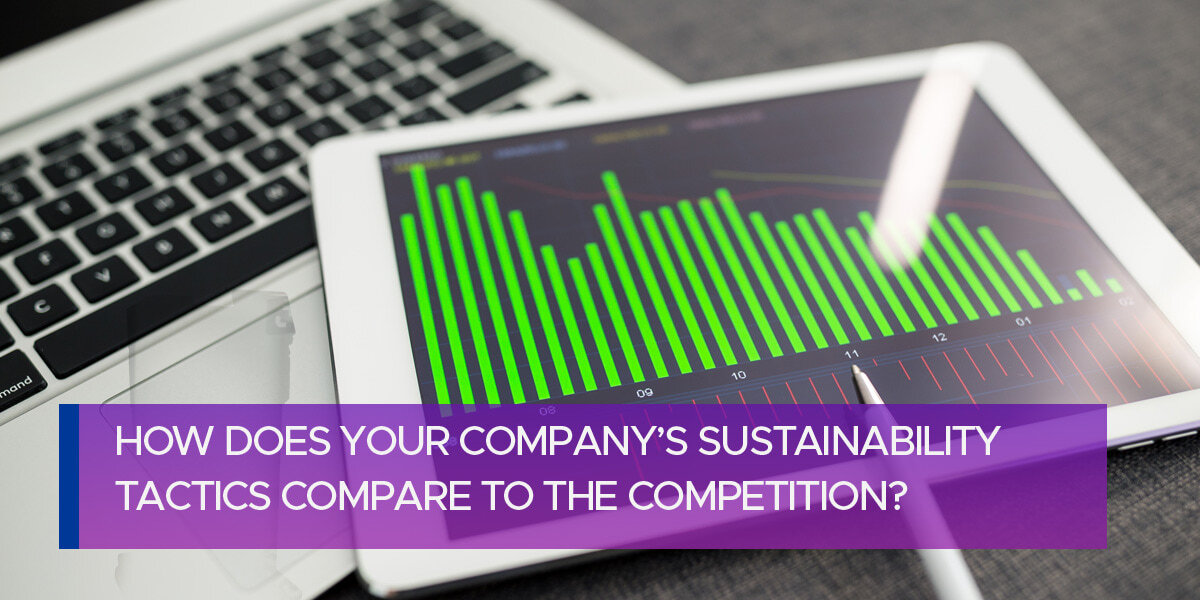
How Does Your Company’s Sustainability Tactics Compare to the Competition?
Every company wants to be sustainable. It’s a buzzword, even companies like Facebook and McDonald’s hope to achieve. This creates a snowball effect as other enterprises seek sustainable strategies. Of course, using empty buzzwords and taking shortcuts isn’t how to achieve sustainable competitive advantage.
In fact, there are three pillars a company of any size needs to achieve sustainability:
- Environmental – Reducing the organization’s carbon footprint. Some companies even take steps above and beyond this baseline to clean the environment.
- Social – Simply being sustainable isn’t enough. It’s essential to foster a culture of social responsibility in the community. Get involved in local and global issues to take a stand.
- Economic – Investors like to invest in businesses with values that align with their own. Taking a stand on sustainability can sometimes alienate other investors who don’t share the belief.
By focusing on these pillars, any business can achieve sustainability. This effort to impact social good for the rest of humanity attracts strong investments and brand loyalty.
What Is Sustainability?
Sustainability is the ability to exist continually. It’s essential for every person, business, and the planet in general. The sustainability of the planet’s resources is dependent on the human race’s ability to manage depletable versus renewable resources.
For a company or organization to be sustainable, it needs to focus on both its own survival, as well as its customers’. This means ensuring safe products are ethically sourced and use as few resources as possible to manufacture, store, and ship to the end-user. It’s not only crucial for the environment, but also for public relations.
Research shows 88% of consumers are looking for brands with a cause. Becoming more sustainable ensures companies generate more revenue from an increasingly discerning customer base.
3 Steps to Assessing Sustainable Initiatives
It’s important to determine how sustainable a business already is. Brands like BMW and Adidas are known for sustainability, and this gives them a sustainable competitive advantage. Following in the footsteps of these sustainable corporate giants is achieved through the following three steps.
1. Understand the Market
Before developing sustainability strategies, determine what it is that customers want. Study competitors to understand their sustainability practices. This provides insight into the potential positive benefits of sustainability strategies before money and resources are poured into them.
2. Develop a Value Proposition
Even sustainability needs a quantifiable value. Save an endangered species, preserve a natural resource, feed and shelter homeless people and animals. There’s no end to the possible sustainability strategies to implement. However, the most important ones will come from leveraging the company’s existing strengths.
3. Support Key Strengths
There’s no need to travel to an exotic land to find sustainable strategies. Simple steps, like digitizing paper processes and automating manual procedures, go a long way toward creating a sustainable competitive advantage. Focus on small changes that make a significant impact when repeated throughout the workforce every day.
With these three steps in place, companies can build operations that achieve a sustainable competitive advantage in a tough market.
How to Achieve Sustainable Competitive Advantage
Just because a company has a competitive advantage doesn’t automatically guarantee sustainability. Uber, for example, had a massive inside track when it came to disrupting the transportation industry. It spread its global footprint and scaled its driver and customer base with record-setting seed investments.
Yet, despite all its competitive advantages, Uber continues to lose money every year. If it continues this trend, it won’t sustain as a business model, and competitor Lyft may be the long-term winner in the race.
However, Uber isn’t taking defeat. The company focuses its revenue on continuous improvements to leverage existing resources in new ways. Now Uber doesn’t just deliver people – it delivers food. By isolating its strengths, it can move to the market with new improvements using existing infrastructure. This creates innovation with a reduced carbon footprint and is a model on how to achieve sustainable competitive advantage.
Common Areas of Improvement
Every business can’t be a McDonald’s or Uber-level success. However, every company can replicate their innovations and sustainability strategies. It starts at identifying the most significant areas of waste in current processes. This is often in document management and manual paper processes.
By implementing new technologies, businesses are enabling automation. This is seen in McDonald’s self-service menus and Uber’s autonomous cars. While front-end sustainability practices get all the glory, it’s backend operations make the biggest difference. Managing print costs, optimizing supply reorders, and other business improvements go a long way toward a sustainable future.
Profits and sustainability go hand in hand. Companies that focus on efficient processes and cost savings will inevitably lean toward sustainability. Reducing waste starts at the source, and by decreasing errors, you’re creating a more sustainable future.
Contact VA Business Systems today to learn how to achieve sustainable competitive advantage through more sustainable strategies.
